Combining tools, strategies, and best practices is essential for measuring and reducing your carbon footprint on Amazon Web Services (AWS). By proactively monitoring your usage, you can diminish your environmental impact and cut your AWS costs. Here's a breakdown of the step-by-step process
Learn how to use AWS Customer Carbon Footprint
- Log in to your AWS account and navigate to the Accounts section.
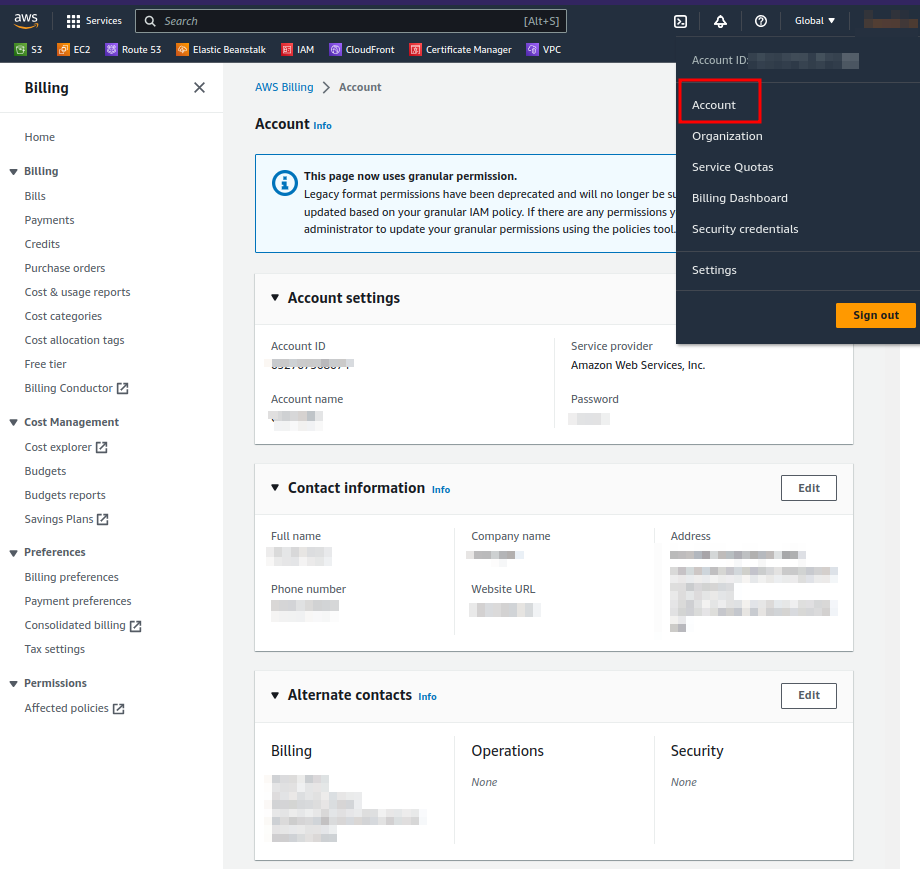
- Access the 'Cost & Usage Reports"
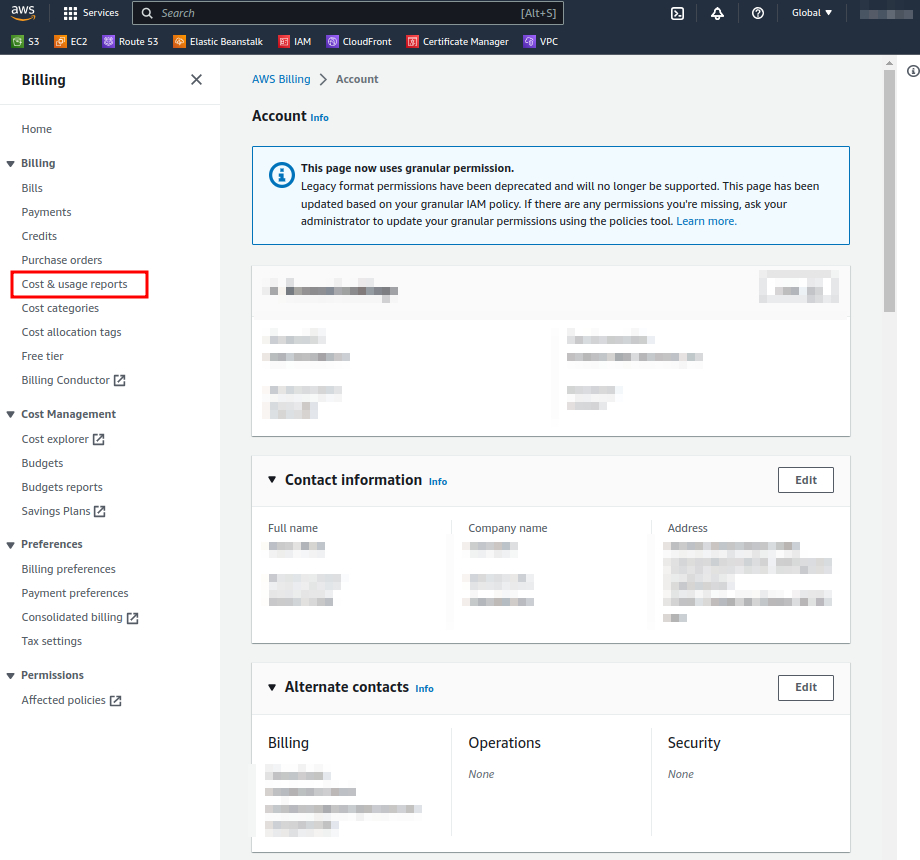
- Choose the month you want to examine for your carbon emissions. A dashboard will then display your carbon emissions along with service-specific details .
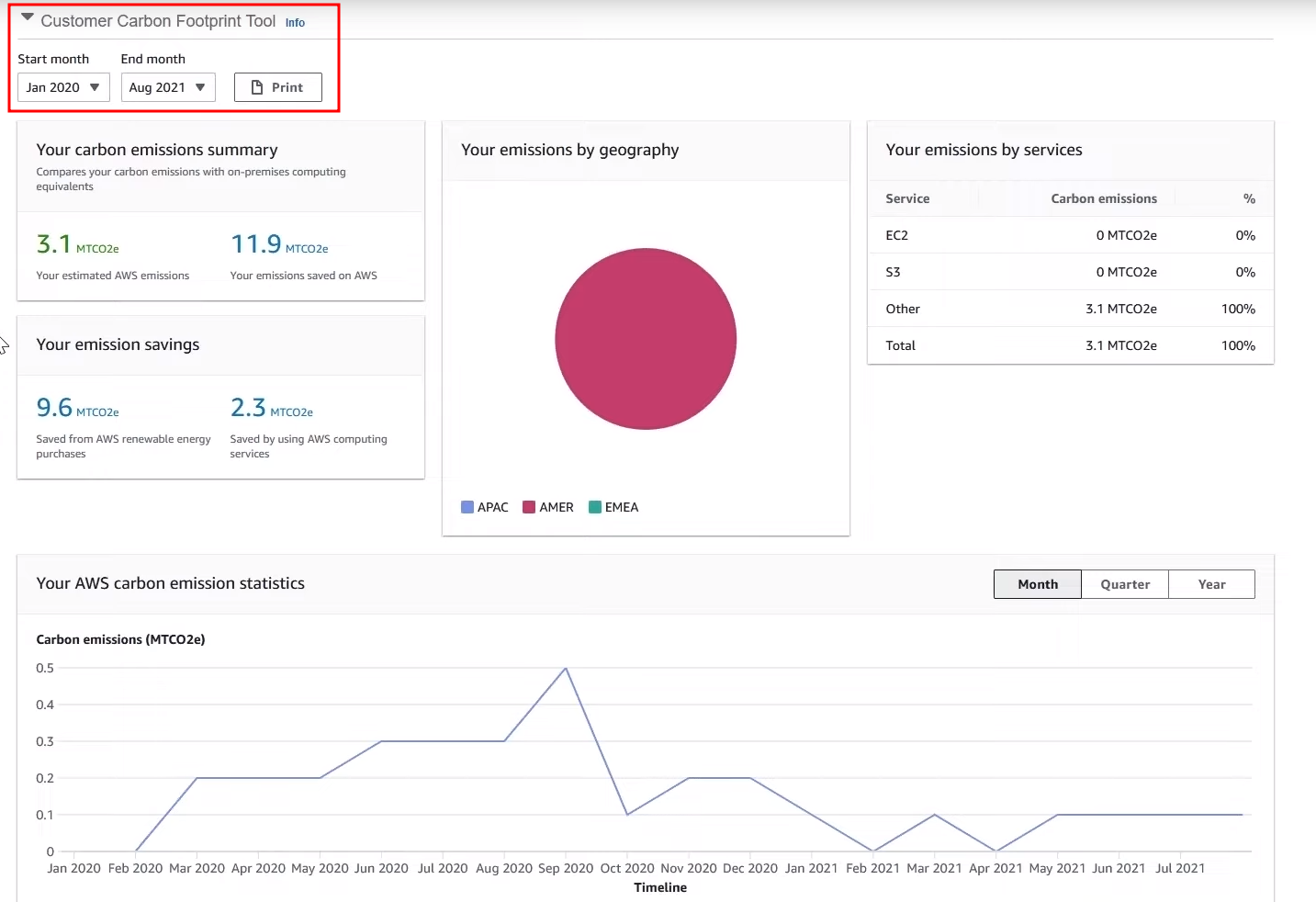
Understanding the Customer Carbon Footprint Tool
- TCO2e: This abbreviation stands for 'metric tons of carbon dioxide equivalent,' which serves as the standard unit for measuring carbon emissions. It considers various greenhouse gases like methane and nitrous oxide.
- Summary of Your Carbon Emissions: Presents an approximation of emissions and emission reductions derived from the workloads deployed within your infrastructure. This summary is divided into two categories:
1.- AWS Emissions: Savings in emissions due to the efficient AWS cloud infrastructure.
2.- Emissions Avoided on AWS: Reductions in emissions attributed to the procurement of renewable energy from AWS 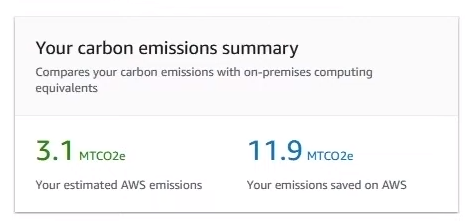
- Geographical Breakdown of Carbon Emissions: In this section, you'll find emissions linked to relevant geographic regions (e.g., AMER, EMEA), rather than specific AWS regions.
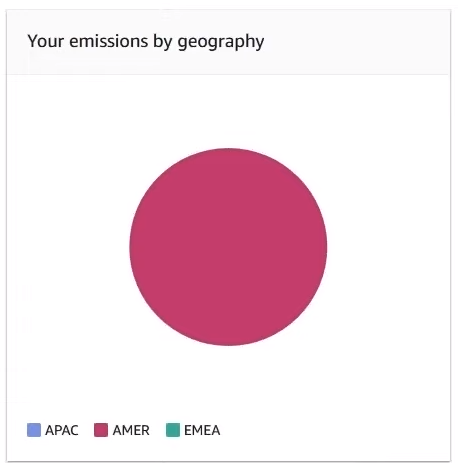
- Emissions by Service: This section illustrates the carbon emissions stemming from the utilization of services such as EC2 Virtual Machines, Amazon Simple Storage Service (S3), and other products and offerings.
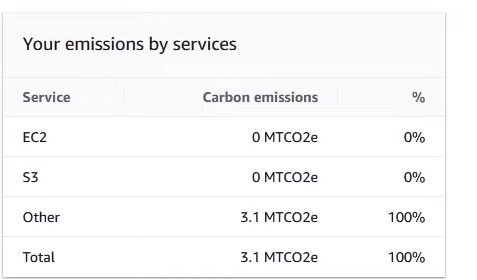
- Carbon Emissions Statistics: This section provides a depiction of the trend in your carbon emissions over different time periods, allowing you to select from monthly, quarterly, or annual perspectives

- Progress towards 100% Renewable Energy: This graph illustrates the projected shift in your carbon emissions as AWS transitions towards renewable energy sources. The projection is based on the services you employ within your AWS account

Available Tools for Estimating Your Carbon Footprint
- Cloud Carbon Footprint: This open-source tool assists in calculating your carbon footprint through the analysis of service usage across different regions, instance types, and instances. By inputting variables such as region, number of instances utilized, instance family, and size, the calculator will furnish you with an estimated carbon footprint
- AWS Cost Explorer: This AWS tool aids in monitoring your utilization of various services, pinpointing potential areas for optimization that can lead to reduced carbon footprint
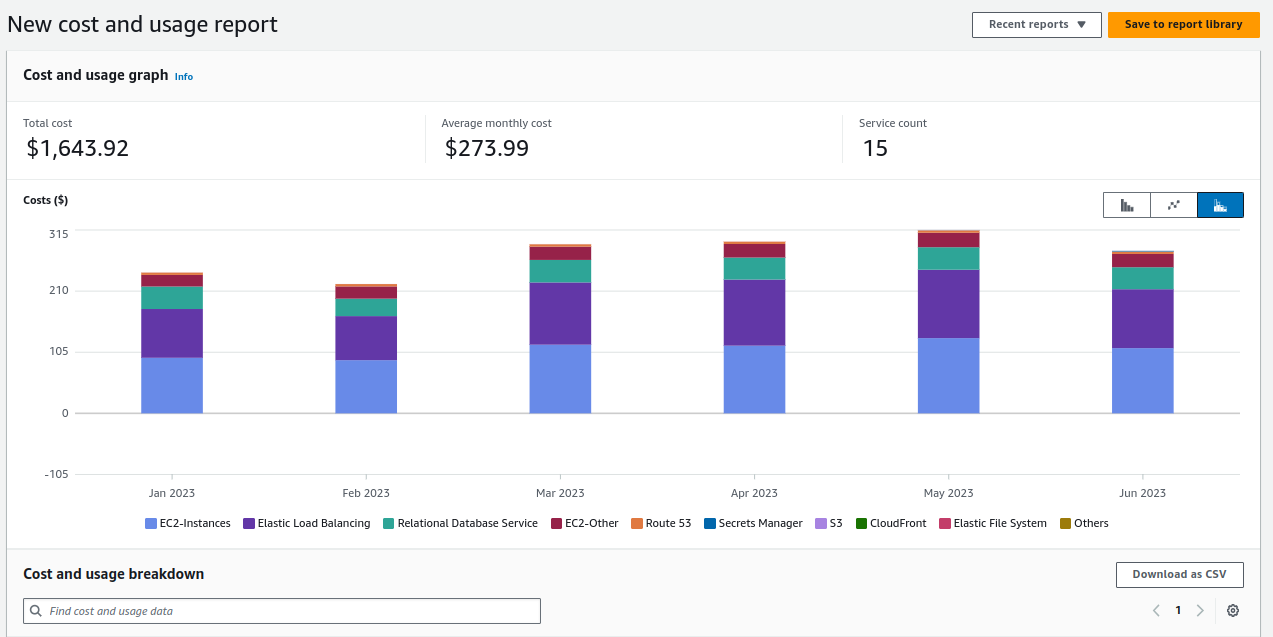
- Trusted Advisor: This tool facilitates the optimization of your AWS infrastructure, leading to cost savings. By adhering to its recommendations, you can substantially decrease your carbon footprint and, of utmost significance, trim down infrastructure expenses.
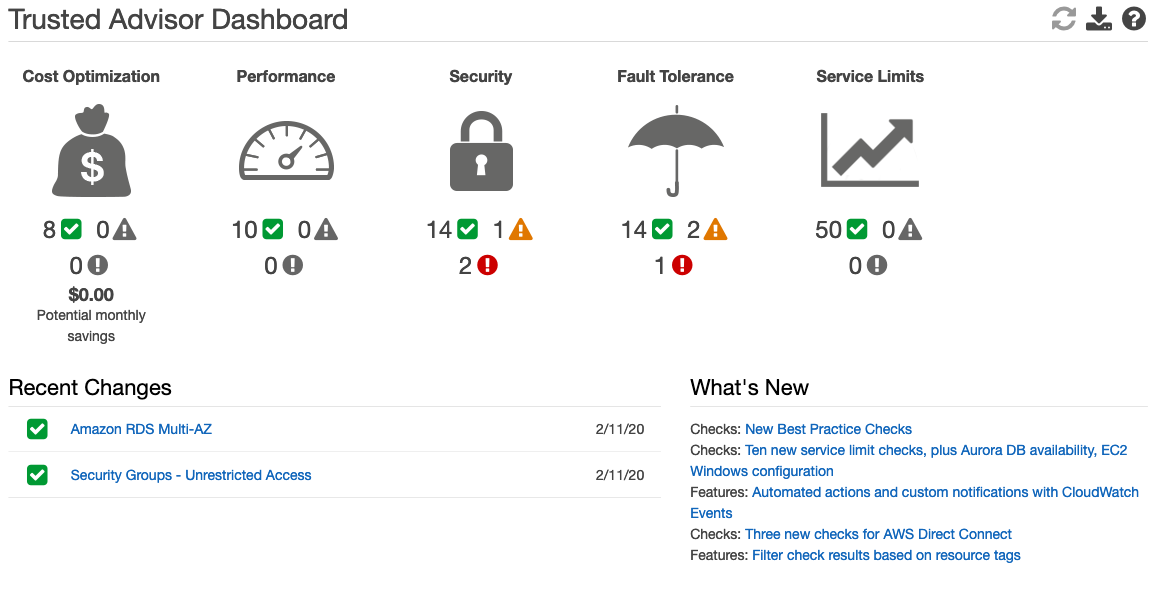
- Amazon EC2 Spot Instances: Utilizing these instances enables you to capitalize on untapped capacity at a lower cost, allowing you to economize while upholding an environmentally conscious approach
Tips for Reducing Carbon Emissions on AWS
- Enhance Energy Efficiency: Capitalize on AWS Low Consumption Instances. AWS presents an array of instance types designed for heightened energy efficiency. For instance, T3 instances consume up to 30% less power than earlier generations, empowering you to curtail your environmental footprint without sacrificing performance.
- Harness Autoscaling for Efficiency: Leverage autoscaling to dynamically adjust the instance count according to demand, effectively diminishing energy consumption and carbon emissions.
- Use AWS Lambda: Trim energy consumption and shrink your carbon footprint through the adoption of a serverless solution. AWS Lambda, a compute service, empowers you to execute code sans the necessity of provisioning or overseeing servers. Opting for this approach aids in curtailing energy use and carbon emissions, as charges are incurred solely for the computing time you actively utilize.
- Harness the Power of AWS Spot Instances: Lower Costs, Smaller Carbon Footprint. Through Spot Instances, tap into underutilized EC2 capacity at a reduced expense. This approach enables you to curtail energy usage and carbon emissions, all the while reaping substantial savings on operational expenditures
- Streamline with AWS CloudFormation: Environmentally Sound and Efficient Infrastructure. This tool empowers you to define your infrastructure as code, simplifying the automation of resource deployment and management on AWS. By adopting this practice, you can curtail energy use and carbon emissions, as it trims the time and resources necessary for infrastructure management. This approach not only fosters a more sustainable environment but also optimizes your cloud operations
- Trust on AWS Trusted Advisor: This tool delivers invaluable recommendations for fine-tuning your AWS utilization and trimming expenses. By adhering to these insights, you can curtail energy consumption and carbon emissions while concurrently achieving cost savings. Armed with this tool, you're poised for a journey towards greener and more fiscally efficient management of your cloud resources
- Opt for AWS Green Regions: AWS provides a range of regions powered by renewable sources like wind and solar energy. Opting for these regions enables you to markedly curtail your carbon emissions while concurrently endorsing the growth of clean and sustainable energy practices.
By implementing each of these suggestions, you'll effectively diminish your AWS carbon footprint, playing an active role in fostering a greener and more ecologically conscious future. .
Do you require guidance on strategically implementing these measures into your AWS account? Or are you seeking to shrink the carbon footprint of your digital solutions and data centers? Reach out to us! At PALO IT, we stand prepared to assist you in maximizing your data's potential and streamlining its storage efficiency. Together, we can drive a positive environmental influence and pave the way for a sustainable tomorrow